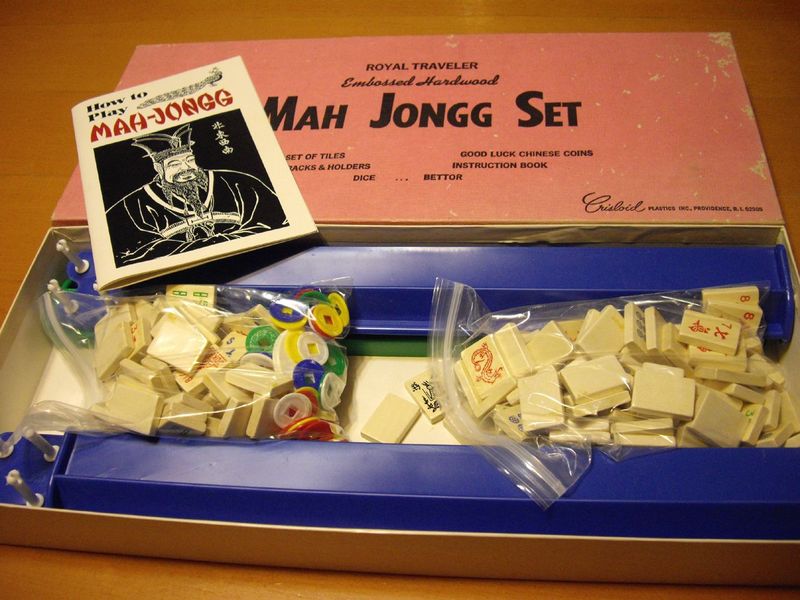American Mah Jongg (1937) Board Game
American Mah Jongg is a tile-based game that originated in China in the mid-19th century and gained popularity in the United States in the early 20th century. It is a variant of the traditional Chinese game of Mahjong, with slight rule differences and its own distinct set of tiles. The game was standardized in the 1930s by the National Mah Jongg League and has since become a beloved pastime for many players.
Game Components of American Mah Jongg
How To Setup American Mah Jongg
To set up the game, players first determine the dealer using the dice. Each player receives a set of tiles, usually 14, and builds a wall of tiles in front of them. The dealer breaks the wall, and players take turns drawing and discarding tiles to build their hands according to the rules specified on the annual rules card.
Gameplay Mechanics and Game Objective
Player Experience
American Mah Jongg is a game that combines strategy and social interaction. Players must pay close attention to the tiles drawn and discarded to strategize their moves. The annual rules card adds a layer of complexity and challenge, keeping the game fresh and exciting. The game fosters a sense of community, as it is often played in groups and clubs, promoting friendships and social connections.
Pros
Cons
Personal Thoughts on American Mah Jongg
American Mah Jongg is ideal for those who enjoy strategic games with a strong social component. It is particularly appealing to individuals who value community and the intellectual challenge of learning and adapting to new rules each year. The game is a great fit for groups of friends, clubs, and social organizations looking to engage in a meaningful and entertaining activity. However, it may not be the best choice for casual gamers seeking a simple, quick game, due to its complexity and annual rule changes.
We are supported by our audience. When you purchase through links on our site, we may earn an affiliate commission, at no extra cost for you. Learn more.

